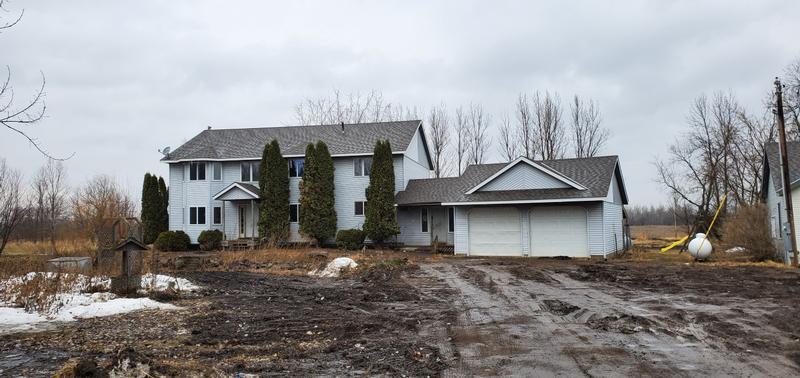Table of Content
It's gripping stuff and then you get to the end and the big reveal you were waiting for doesn't happen. In its day Gone Home was probably a game that raised the bar for story telling. Host/Executive Producer of The Gaming Hub Podcast, which can be found right here on The Xbox Hub.
The house features hidden passageways and compartments which will play a large role in discovering the truth as you find them. Each room is constructed to represent either the family in general or a specific member of it – for example, Sam’s bedroom is far different from that of her parents, both in style and in feel. There are locked doors, filing cabinets, and safes throughout as well – be sure to examine everywhere so you don’t miss any keys. It’s quite amazing what Gone Home was able to accomplish through minimal action and a highly believable, immersive setting.
Recent Reviews
But nearly a century later, Gone Home presents us with a game that both embraces that melancholic notion while simultaneously exploring the roots, secrets, and artifacts of a family that feels as real to me as my own. Stepping foot inside of the Greenbriar home and discovering the things they left behind is a powerful experience. Gone Home is a remarkable achievement, and piecing together its poignant story will stick with me forever. Gone Home I thought would be a very interesting game to follow.
Gone Home’s true misstep was to not make all of the stories it told flow into each other in a single major revelation. But the same successes that make Gone Home’s narrative so engrossing also end in a spot of disappointment as you collect the final pieces of the puzzle. In the end, you realize you haven’t been working on a single puzzle, but on four separate ones. You end up piecing together the puzzles of the house, the mother, the father, and Sam, and you realize that none of these puzzles actually come together to form a whole. It’s as though you’ve been told four parallel stories that hold minor intersections, when you were expecting an intricate weaving tale.
Now the world is coming back, what to do with unfinished games during COVID-19?
Gone Home managed to touch upon important, modern issues in such a way as to be both respectful and helpful. I'm sure there are those who can learn a lot from this game just as I'm sure there are those who could be greatly comforted by this game. I would normally say that even the best walking simulators shouldn't cost more than $10, but Gone Home makes a good case for challenging that assertion. Dropping an object would provide the proper thump or clatter depending on the object itself and how it was dropped and what it was dropped onto.

The game plays almost like an interactive book, with the whole thing being about the story; there are no real collectables, mini-games, or alternate mechanics, and it is awesome. I personally live for amazing stories; tales like the Legend of Zelda and the Lord of The Rings are some of the things I love the most, and there is nothing better than a well-told video game story. Gone Home focuses on the idea of piecing together the story of your character’s family, the Greenbriers. You play as Katie, a twenty-something girl who has just come home after spending a year travelling in Europe to an empty house and an ominous note on the door telling you not to look around.
Game review of the game "Gone home"
I got the game on PC, but with its newly minted console release, I figured it was as good a time as any to delve into it. The Pinball Wizard review for Switch, PCYour time may be better spent listening to Pinball Wizard by The Who than playing this game. Story games are fine, but they have to have a good story with a good end. For a start the puzzles aren't that great, there not bad but equally this isn't amazing. What's worse though is the atmosphere the game projects is great. There's this mystery that your solving, you read letters, find out difffernt things about the characters.

I can't give Fullbright enough credit for making this game. The game is filled with masterful storytelling and real life lessons. The audio in Gone Home is very fitting of the setting and tone of the game. Thunder is audible every so often, and the only other audio you hear is when you turn on a TV or put a mixtape in a player.
Not a game, just some bollocks
The goal is to walk around and interact with the things you see until you can puzzle out the underlining mystery (and sub-mysteries) of the game. All of Sam's activities provide further context to what might have happened to her, a mystery that quickly becomes much more urgent and important than the location of their parents . A staircase to the second floor occupies the center of the room and several doors on the ground floor lead off in various directions. The phone and answering machine is clearly visible and seems worth checking out. You begin the game in an empty house after having returned from a long trip.

The code for the game seemed well written and it had very little technological errors. It is clear that who ever wrote this game originated with a more tech background and not as much a story telling background. I would recommend it to those gamers that are into completing stories and uncovering mysteries. Defiantly would not recommend it for gamers that are into action. On the flip side, there were also quite a few noticeable problems with the game. Without spoiling it, overall it is an anti-climatical storyline.
Instead, the game is believably rooted in that era; the explosive popularity of Street Fighter II factors into Sam's friendships, and the huge Oliver Stone-fueled resurgence in JFK conspiracy theories impacts Terry's literary fortunes. Tapes you can listen to featuring music by riot grrrl acts like Bratmobile and Heavens to Betsy flesh out not just the time period, but your understanding of Sam as a person. Meanwhile, the game's excellent ambient score creates the sense that the entire house is thrumming with energy, despite being empty at the moment. It would be harsh and disingenous to call that disappointment a failure. While playing, I was expecting a big reveal about why the house was empty, why everyone was gone, and why Kaitlin had arrived home to find that her voicemail from the night of her flight went unheard. Instead, all those answers were given to me in separate bits and pieces.

You’ll find out that this isn’t the home Katie grew up in, so for her too, Gone Home feels as much as an exploratory journey as it does a homecoming. You play as Kaitlin Greenbriar, the older of Jan and Terry Greenbriar's two daughters. After spending a year gallivanting around Europe, you've come to your family's new home one rainy night in June of 1995, and although you expected your folks to be there, you find the house empty. Making the absence of your family a little more ominous are a scrawled note from your 17-year-old sister, Sam, on the front door, and a few emotional messages on the answering machine from a young woman tearfully asking Sam to pick up the phone.
And that’s an accomplishment that should define the genre of walking simulators – an experience that leaves you wondering how quickly time flew by. A walking simulator should be more akin to a book or a movie than any other game, and Fullbright has created an experience that you can’t take your eyes off of. I had heard good things of this before-hand but went in pretty much blind. The way the story is slowly revealed is quite interesting and to be honest, quite addicting. The controls and art style play and look similar to other "walking simulator" games such as "The Vanishing of Ethan Carter" and "Amnesia" but does enough to make it unique enough to be different.
You truly need to run everything over with a fine-tooth comb to find every little piece of this house. Gone Home’s brilliance is really in its ability to immerse the player completely in its haunting environment, reminiscent of those days you may have been left alone as a kid in your house on a dark and ominous night. The pace is very slow and methodical, with ever-so-slight ambient music and lightning strikes looming in the background, heightening the exploratory experience. The graphics aren't particularly high quality, but neither are they subpar. Everything in the house looks real enough from a video game perspective, and the detail given to the textures and modelings of the house and the objects within are above average.
































